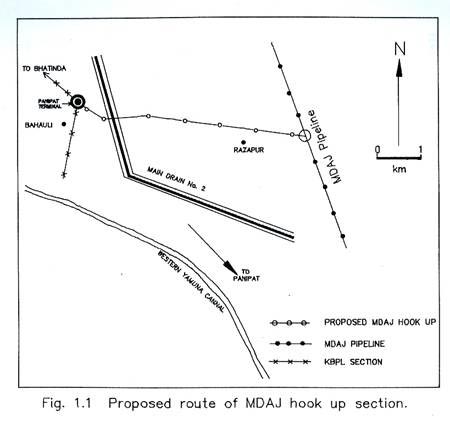Introduction
|
Worldwide pipeline mileage under construction is now 86,000 miles and it is expected to maintain the same pace throughout the 1990s to meet the ever increasing demand for clean burning fuel (Ives, 1993). Likewise, India's rapid industrialisation and the resultant demand for crude and petroleum products to meet the power and energy demand has led to unprecedented expansion for pipeline network in the country (WII, 1994). As a result, India, with 7,800 km of existing pipeline network will have proposed expansion by additional 7865 km of pipelines by the three major oil companies of India, viz., Oil and Natural Gas Commission (ONGC), Gas Authority of India (GAIL) and Indian Oil Corporation Limited (IOCL). This includes the GAIL's proposal for a national gas grid linking north, west, south and east regions which would require 18,300 km length of pipelines (Ives, 1993). Pipelines, are by far the most superior mode of transport as they involve lower cost of production, conservation of fossil fuels, minimum product loss during transit and reduce pressure on rail and road transportation. But, pipelines have the disadvantage of causing considerable impacts upon the environment and the wildlife values of the areas that are located en route (WII, 1993). However, these pipeline projects can be made to substantially mitigate such impacts and become environment friendly provided due consideration to the environmental concerns are given at the conceptual and planning phases of these projects. In this case, the concerns are choice of route, construction technology, pipeline design, and precautions in construction and post construction activities. The Environmental Impact Assessment (EIA) studies of such pipeline projects focus on identification of potential impacts of proposed project, develop safeguards that will enable expansion to take place without significant damage to natural environment and or harmful effects on the people and wildlife that live in the area. 1.1 THE PROPOSED PROJECT 1.2 PROJECT SETTING, DESIGN AND DESCRIPTION
1.3 SCOPE OF WORK 1. To assess the status of wildlife species and habitats (terrestrial and aquatic) along the proposed project. 2. To identify and evaluate the likely impacts on wildlife (endangered/threatened) species and ecologically sensitive areas/habitats (forests/scrublands/grasslands/ wetlands) due to the proposed project. 3. To suggest mitigatory measures for the likely impacts that may be caused by the proposed project. 4. To outline legal/statutory obligations to be fulfilled by the project proponent under the Forest (Conservation) Act, 1980 and Wildlife (Protection) Act, 1972. |
Last Updated: October 6, 2015










